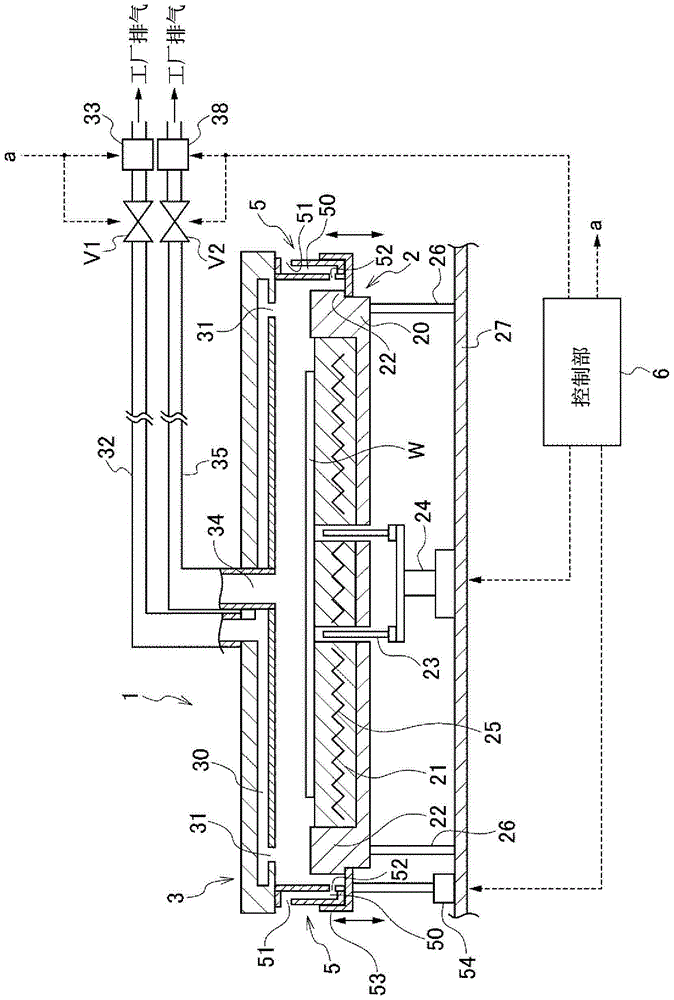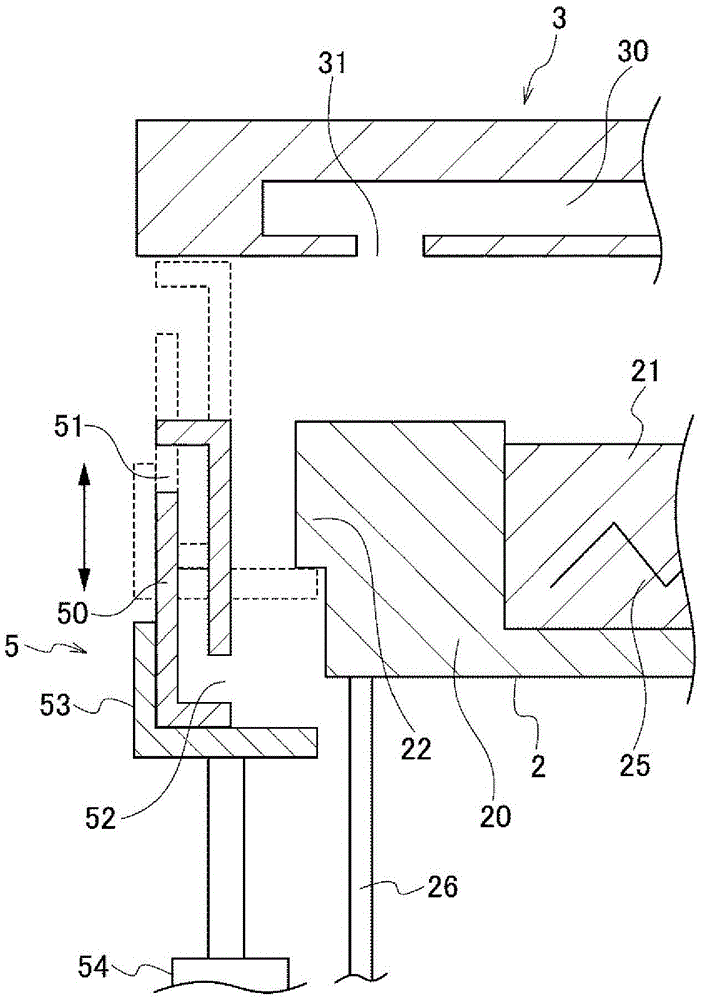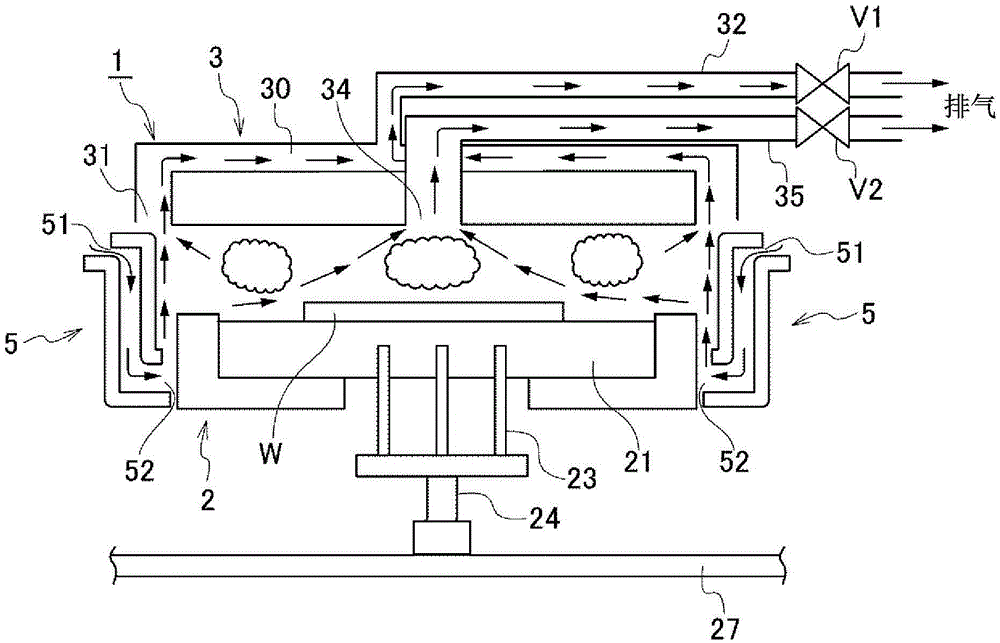Heat treatment apparatus and heat treatment method
A technology for heat treatment and treatment of containers, used in the manufacture of electrical components, circuits, semiconductor/solid-state devices, etc. The effect of uniformity
- Summary
- Abstract
- Description
- Claims
- Application Information
AI Technical Summary
Problems solved by technology
Method used
Image
Examples
Embodiment 1
[0102] Examples performed to verify the effects of the embodiments of the present invention will be described. Using the heat treatment apparatus described in the embodiment of the present invention, the wafer W coated with the SOC film was heated to 350°C. Before the wafer W is heat-treated and taken out of the processing chamber 1 , exhaust is performed using the central exhaust port 34 and the peripheral exhaust port 31 , and the number of particles of 100 nm or larger is counted outside the processing chamber 1 . The exhaust flow rate of the central exhaust port 34 and the exhaust volume of the outer peripheral exhaust port 31 in each example were set as follows. In addition, after the wafer W is loaded into the processing container 1 and placed on the bottom structure 2 , heat treatment is performed for 80 seconds, and the ring-shaped opening and closing member 5 is opened to take out the wafer W.
Embodiment 1-1
[0104] The exhaust rate of the outer peripheral exhaust port 31 is set to 20 L / min, and the exhaust rate of the central exhaust port 34 is set to 10 L / min. The period from loading the wafer W into the processing chamber 1 to taking it out , Exhaust is carried out from the outer peripheral exhaust port 31 and the central exhaust port 34.
Embodiment 1-2
[0106] The settings were the same as in Example 1-1 except that the exhaust volume of the outer peripheral exhaust port 31 was set at 25 L / min, and the exhaust volume of the central exhaust port 34 was set at 5 L / min.
PUM
 Login to View More
Login to View More Abstract
Description
Claims
Application Information
 Login to View More
Login to View More - R&D
- Intellectual Property
- Life Sciences
- Materials
- Tech Scout
- Unparalleled Data Quality
- Higher Quality Content
- 60% Fewer Hallucinations
Browse by: Latest US Patents, China's latest patents, Technical Efficacy Thesaurus, Application Domain, Technology Topic, Popular Technical Reports.
© 2025 PatSnap. All rights reserved.Legal|Privacy policy|Modern Slavery Act Transparency Statement|Sitemap|About US| Contact US: help@patsnap.com



